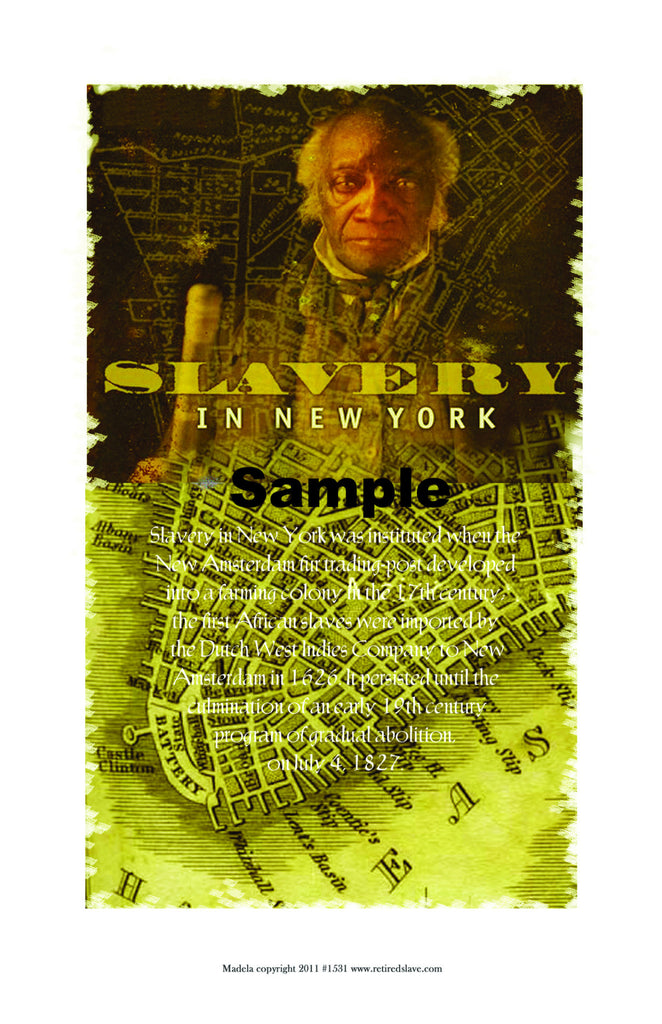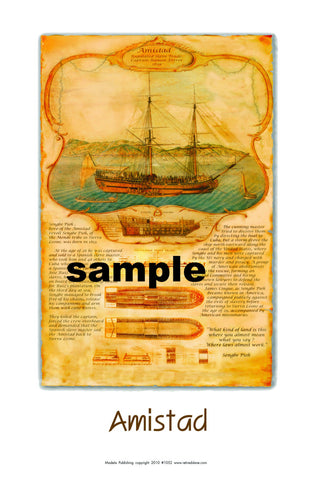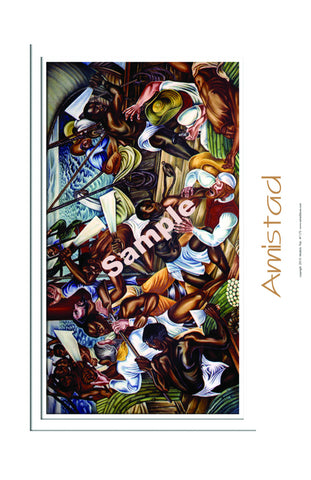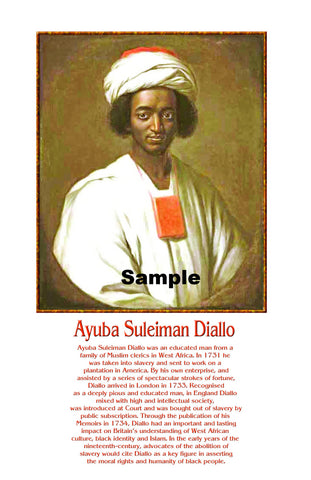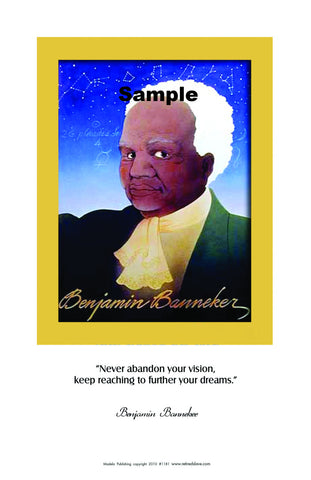Slavery in New York #1531
$ 10.00
Caption from poster__
New York City’s
Slave Past
In New York City, slaves could not appear on the street
after dark without a lighted lantern. From 1700 to 1740
, growth of the African slave population in New York out
distanced growth of the European population and gave the
city the largest slave population in the region. Many of
these slaves provided domestic service to wealthy families.
Systematic use of black slaves in New Netherland began in 1626, when the first cargo of 11 Africans was unloaded by the Dutch West India Company. The company had been founded in 1621, and it "operated both as a commercial company and as a military institution with quasi-state like powers." The company had tried its colonial experiment of New Netherland at first with agricultural laborers from Holland, but this plan went nowhere. Most of the Dutch who came to America sought to pile up money in the lucrative fur trade and then hurry back to the comforts of Holland to enjoy their wealth. So the company increasingly turned to slaves, which it already was importing in vast numbers to its Caribbean colonies. From the 1630s to the 1650s, the WIC "was unquestionably the dominant European slave trader in Africa." In 1644 alone, it bought 6,900 captives on the African coast. Most of these went to the company's colonies in the West Indies, but from its stations in Angola, the company imported slaves to New Netherland to clear the forests, lay roads, build houses and public buildings, and grow
food. It was company-owned slave labor that laid the foundations of modern New York, built its fortifications, and made agriculture flourish in the colony so that later white immigrants had an incentive to turn from fur trapping to farming. But private settlers still faced an acute shortage of agricultural labor that was retarding the colony. A company audit report noted that, "New Netherland would by slave labor be more extensively cultivated than it has hitherto been, because the agricultural laborers, who are conveyed thither at great expense to the colonists sooner or later apply themselves to trade, and neglect agriculture altogether." As a result, the WestIndia Company relaxed its monopoly and allowed New Netherlanders to trade their produce to Angola and "to convey Negroes back home to be employed in the cultivation of their lands." The company was willing to forego profit for the sake of spreading slavery in New Netherlands and getting the colony settled. It even allowed private owners to exchange slaves they were dissatisfied with for company slaves. But only a trickle of slaves flowed into New Netherland from Angola; the colonists found the Africans "proud and treacherous," and preferred to seek "seasoned" slaves from the West Indies, specifically Curaçao. In addition to those they bought from the West Indies, Dutch settlers bought slaves seized by privateers from Spanish ships. The steady flow from various sources allowed the colony to stabilize and, by 1640, to expand its agricultural output. "Slavery helped to prepare the way for this transition by providing the labor which made farming attractive and profitable to the settlers. Slave labor was especially important in the agricultural development of the Hudson Valley, where an acute scarcity of free workers prevailed."
food. It was company-owned slave labor that laid the foundations of modern New York, built its fortifications, and made agriculture flourish in the colony so that later white immigrants had an incentive to turn from fur trapping to farming. But private settlers still faced an acute shortage of agricultural labor that was retarding the colony. A company audit report noted that, "New Netherland would by slave labor be more extensively cultivated than it has hitherto been, because the agricultural laborers, who are conveyed thither at great expense to the colonists sooner or later apply themselves to trade, and neglect agriculture altogether." As a result, the WestIndia Company relaxed its monopoly and allowed New Netherlanders to trade their produce to Angola and "to convey Negroes back home to be employed in the cultivation of their lands." The company was willing to forego profit for the sake of spreading slavery in New Netherlands and getting the colony settled. It even allowed private owners to exchange slaves they were dissatisfied with for company slaves. But only a trickle of slaves flowed into New Netherland from Angola; the colonists found the Africans "proud and treacherous," and preferred to seek "seasoned" slaves from the West Indies, specifically Curaçao. In addition to those they bought from the West Indies, Dutch settlers bought slaves seized by privateers from Spanish ships. The steady flow from various sources allowed the colony to stabilize and, by 1640, to expand its agricultural output. "Slavery helped to prepare the way for this transition by providing the labor which made farming attractive and profitable to the settlers. Slave labor was especially important in the agricultural development of the Hudson Valley, where an acute scarcity of free workers prevailed."
